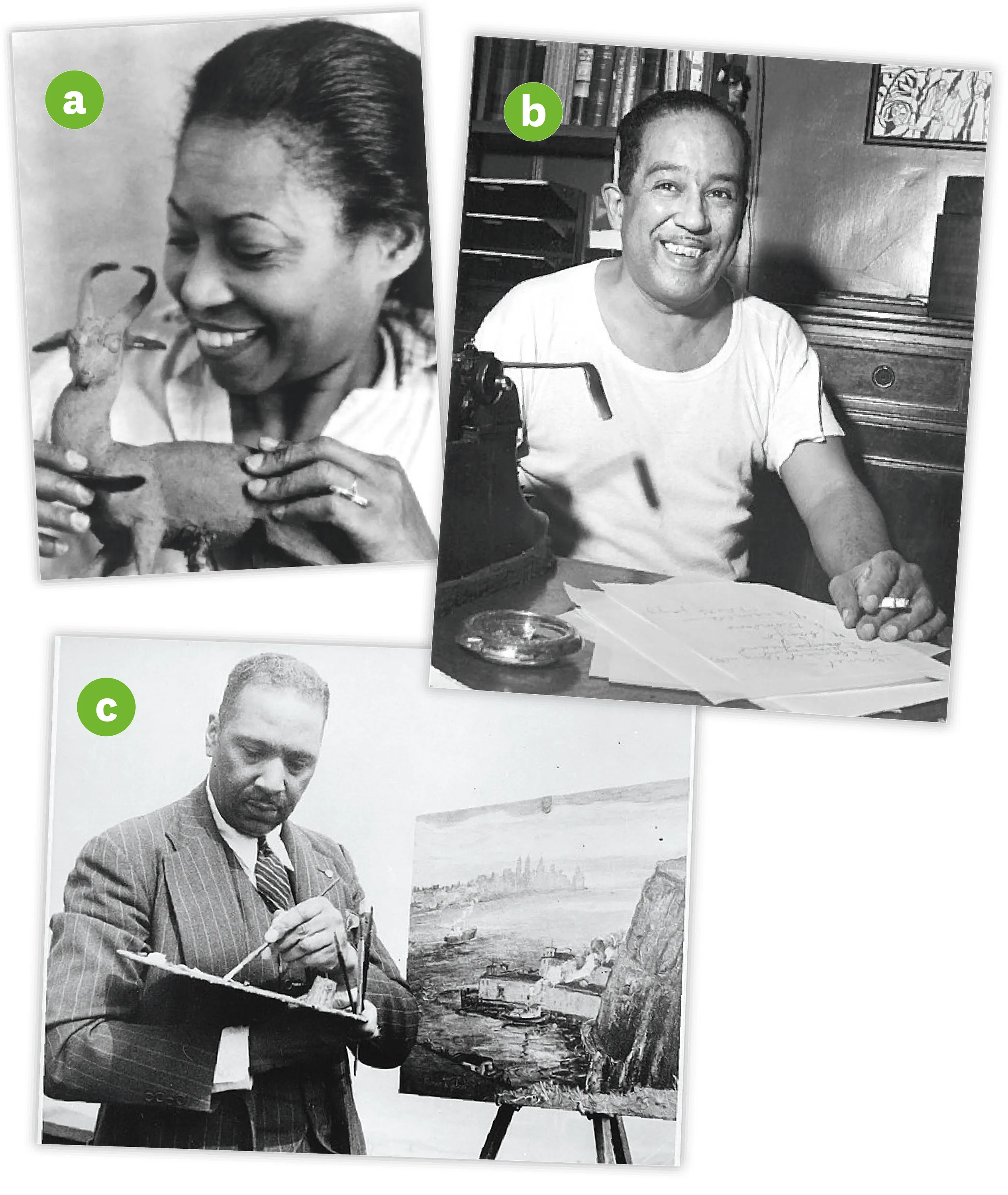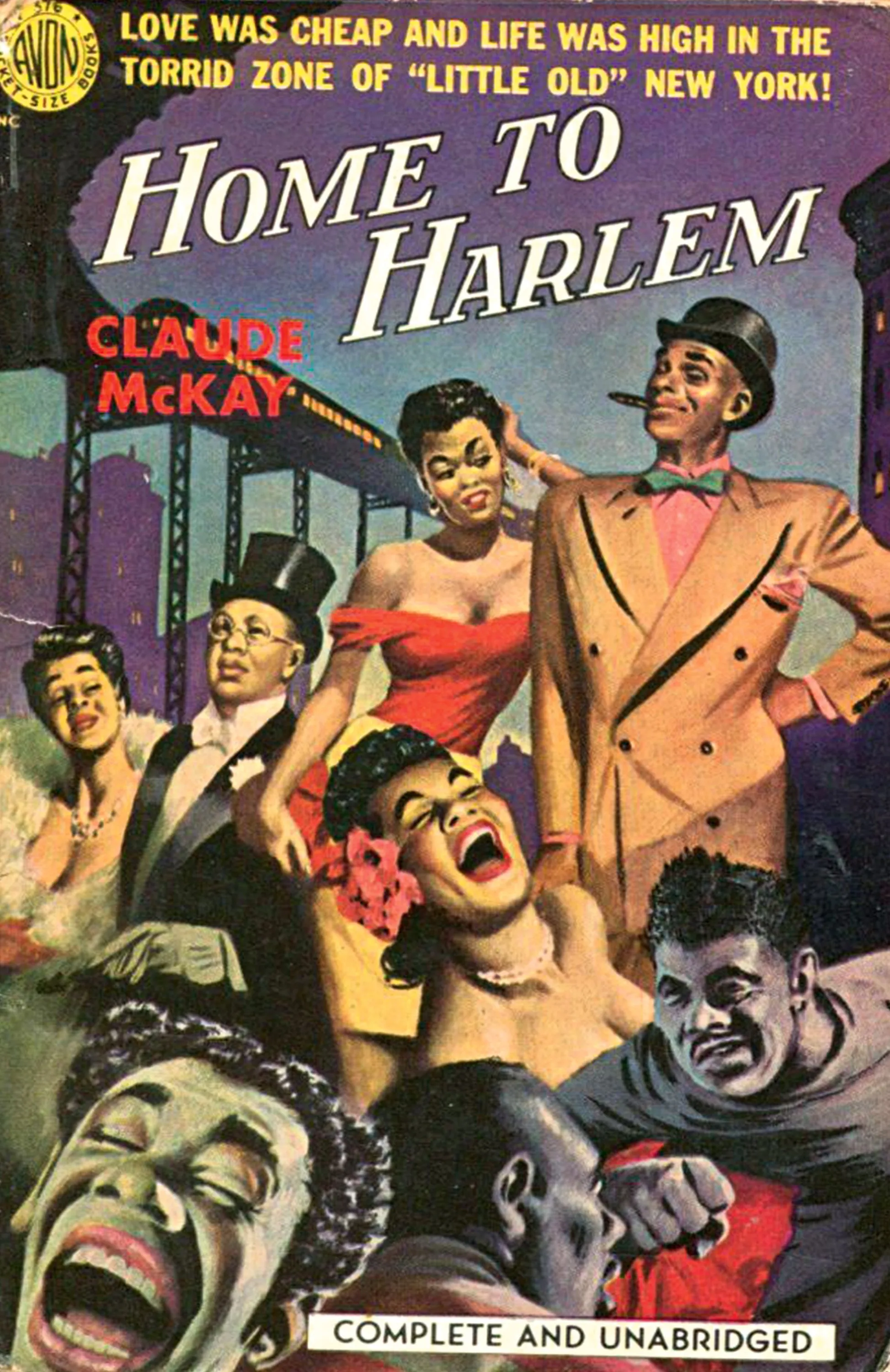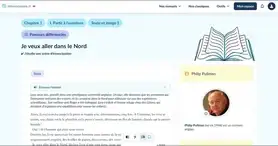Ressource affichée de l'autre côté.
Faites défiler pour voir la suite.
Faites défiler pour voir la suite.
1. People in England didn't use the word "jazz" in the 1920s.
2. Jazz was popular in the USA only.
3. Jazz was meant for a quiet dance.
2. Jazz was popular in the USA only.
3. Jazz was meant for a quiet dance.
Ressource affichée de l'autre côté.
Faites défiler pour voir la suite.
Faites défiler pour voir la suite.
1That was Harlem!
Ressource affichée de l'autre côté.
Faites défiler pour voir la suite.
Faites défiler pour voir la suite.
Activities
1. Where is Harlem in relation to Chicago?
2. Pick out some items/activities from Mission 1 which you would expect to find in the Cotton Club.
3. Apart from musicians, imagine other types of artist you could meet in Harlem in the 1920s and 1930s.
4. Identify clues on one of the photographs beside and complete the chart.


5. What can you deduce about the Cotton Club?


| Photograph n° | a | b | c |
| Person's description (clothes and attitude) |
|
|
|
| Objects I can see |
|
|
|
| My conclusion |
|
|
|
5. What can you deduce about the Cotton Club?
Ressource affichée de l'autre côté.
Faites défiler pour voir la suite.
Faites défiler pour voir la suite.
Ressource affichée de l'autre côté.
Faites défiler pour voir la suite.
Faites défiler pour voir la suite.
2A flourishing time
Ressource affichée de l'autre côté.
Faites défiler pour voir la suite.
Faites défiler pour voir la suite.
Activities
1. Look at the book cover and guess what this might be about.


2. Listen to the audio and find art style of these artists.
a) Langston Hughes →.
b) Zora Neal Hurston →.
c) Bessie Smith →.
3. Fill in the text with the words.
4. Sort words connected to poetry from words connected to painting. Which art form do the other words connect to?


| Place |
|
| Time |
|
| People |
|
| Activities |
|
2. Listen to the audio and find art style of these artists.
A flourishing time
a) Langston Hughes →
b) Zora Neal Hurston →
c) Bessie Smith →
They used the -poetry, litterature, drama- to prove the of African Americans. They wanted to disprove the of that time and to show that African Americans did not excel only in . They were real .
4. Sort words connected to poetry from words connected to painting. Which art form do the other words connect to?
| Poetry | Painting |
|
Ressource affichée de l'autre côté.
Faites défiler pour voir la suite.
Faites défiler pour voir la suite.
Ressource affichée de l'autre côté.
Faites défiler pour voir la suite.
Faites défiler pour voir la suite.
3The Weary Blues
Ressource affichée de l'autre côté.
Faites défiler pour voir la suite.
Faites défiler pour voir la suite.
Activities
1. Find the line in the poem with a similar meaning.
a) Moving forwards and backwards, while singing gently. →
b) In a soft light. →
c) Touching the white piano keys with black fingers. →
d) Moving from side to side on an old chair. →
2. Match the words associated with blues music to their definition.
3. Listen and describe the relationship between the artist and his instrument.
a) Moving forwards and backwards, while singing gently. →
b) In a soft light. →
c) Touching the white piano keys with black fingers. →
d) Moving from side to side on an old chair. →
2. Match the words associated with blues music to their definition.
| Moan | |
| Croon | |
| Sway | |
| Drowsy | |
| Mellow |
3. Listen and describe the relationship between the artist and his instrument.
The Weary Blues
a) The keys played a drowsy tune. → He made .
b) The piano swayed to the mellow croon. →.
b) The piano swayed to the mellow croon. →
Ressource affichée de l'autre côté.
Faites défiler pour voir la suite.
Faites défiler pour voir la suite.
Recite verses
Listen
Listen: Droning a drowsy syncopated tune Rocking back and forth to a mellow croon.
Réfléchis : Repère les syllabes accentuées, et marque bien la différence avec celles non accentuées. Ressens-tu le balancement propre au Blues ?
Repeat
Répète : With his ebony hands on each ivory key
He made that poor piano moan with melody
O Blues!
Ressource affichée de l'autre côté.
Faites défiler pour voir la suite.
Faites défiler pour voir la suite.
Causative structures
Observe : He made that poor piano moan with melody. My mother had me learn many poems.
Réfléchis :
a) Quels sont les verbes conjugués au passé ?
b) Quels verbes indiquent pourtant une réelle action ?
c) Quels sont donc les sujets de ces actions ?
Conclus : Dans une structure causative le sujet du
Ressource affichée de l'autre côté.
Faites défiler pour voir la suite.
Faites défiler pour voir la suite.
Mission 2
1. Your second mission consists of...
2. It will be about...
2. It will be about...
3. Choose your level:
Une erreur sur la page ? Une idée à proposer ?
Nos manuels sont collaboratifs, n'hésitez pas à nous en faire part.
j'ai une idée !
Oups, une coquille


